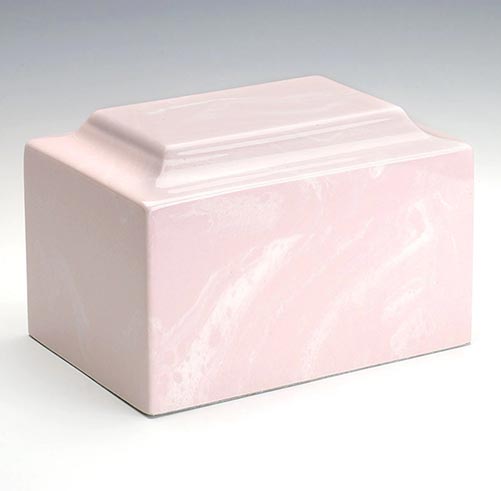What is a witness cremation? Do you “see” everything that happens? Are you even allowed to be there when the cremation occurs?
If you have questions about witnessing a loved one’s cremation, read on. You will find out the pros and cons and make an informed decision about watching the cremation.
What Is a Witness Cremation?

When you witness the cremation, you will get to see your loved one for identification and to say your final goodbyes. Then you will watch, usually through a window, as the crematory operator takes the body, places it into the cremation retort, and begins the cremation process.
A witness cremation is also called a cremation viewing. Most funeral homes or crematoriums offer it for an extra fee. There is usually a limited number of people that may attend. You may have a small ceremony before, much like a committal service.
Next, let’s look at the logistics (can you watch?) and then the emotional aspects (should you watch it?) of witnessing the cremation.
Can You Watch the Cremation?
When you witness a cremation, you will not usually watch the whole process. A cremation can take anywhere from 3 to 5 hours, so most family members only stay to witness the beginning.
The crematory will have a “viewing room” with a large window for the family to watch out of. You will not be allowed to touch your loved one.
The body of your loved one will have been placed in a heavy cardboard box or cremation casket, depending on which you have chosen.
Once everyone is ready, the retort operator will slide the body into the retort, close the retort door and switch it on. Pushing the button begins the cremation.
There are some crematories that may allow a family member to push the button to start the cremation.
Urns Made in the USA
Can the whole family come? How many people can watch?
Most times, with a cremation viewing, only the immediate family may attend. And usually no more than 10 individuals at one time. The immediate family would be the spouse and children of the deceased.
Depending on the funeral home, maybe some exceptions will be made. It is best to check with your funeral director before asking anyone else to attend.
Can you have a cremation service?

Before Cremation
A full funeral service often happens before the cremation takes place. Everything is the same as a traditional funeral except for the final disposition. The body will go to the crematory instead of the cemetery.
At the Time of Cremation
You can also have a small, intimate gathering when the cremation occurs. This is sometimes called a cremation ceremony.
Often times, the family gets together at the crematorium. You can share memories, a eulogy, readings, sing songs or hymns. You might even ask a pastor to come and pray. Most crematoriums will allow a clergy member in with the family.
After Cremation
Of course you can also have a memorial service at any time after the cremation. With a full-body funeral, the body’s natural decomposition limits the time frame for the funeral to a very short period after death.
But once the body has been cremated, you have more flexibility and can plan a memorial service weeks or even months later. You can bring the urn with the ashes to the service or not – it’s up to you.
Related: What is the difference between a funeral and a memorial service?
Can you view the body prior to cremation?
Yes, you can view the body before cremation.
A traditional viewing is allowed if the body has been embalmed. If the body is not embalmed it will be an ID viewing, and only immediate family would be allowed in for a maximum of 30 minutes (depending on your state’s laws).
Does the person wear clothes for cremation?
He/she will be cremated in whatever they died in. If they passed at the hospital, they would be in the hospital gown. When your loved one passes at home, they will have on those particular clothes.
If you want your loved one to be cremated in something else, something special, it is best to provide that outfit to the funeral home.
Should you bring the cremation urn?

You can purchase an urn from outside of your funeral home. The funeral home would have you sign a waiver if you didn’t buy the urn through them. The funeral home might charge a nominal fee to fill an urn that you have purchased somewhere else.
So, yes, bring the urn with you and leave it with the funeral home. They will take care of the rest and let you know when to pick it up.
How long does cremation take?
A cremation can take anywhere from three to five hours. It depends on the retort, body weight, and the cremation container.
The average time of a cremation is three hours. The processing adds on another one to two hours. Read more about the process here.
Will you get the ashes back the same day?
Returning the cremated remains to you can take anywhere from one to ten days. It truly depends on the crematory and the number of cremations that are taking place at the crematorium.
Should You Watch the Cremation?
Deciding to watch your loved one being cremated is very personal, and it is not for everyone. Cremation witnessing is not only considered acceptable, but it might even be the new norm.
Witnessing a cremation can help you to gain closure. When you receive the cremated remains, you will be reassured that is is their ashes.
Let’s talk a little about the whole experience, and maybe this will help you decide.
What happens when you arrive at the crematory?
The funeral director will escort you and your family into the viewing room. There will be a large window with a lowered shade. The crematory operator will make sure everything is ready. Raising the window shade, you will see your loved one’s body. He/she will be in the cremation container that you have chosen.
Your loved one will be dressed in clothing you have brought in or the clothing they died in (whichever you decided on). Their eyes and mouth will be shut, making them look like they are sleeping. You will have a few minutes to say your final goodbyes through the window.
Once you have expressed your goodbyes, the funeral director will give the signal to the crematory operator. Upon receiving the signal, your loved one will be gently guided on rollers into the cremation chamber.
The chamber’s door will slide shut, and the button to start the cremation will be pushed. Some more modern crematoriums are equipped to allow you the option to push the button.
You will hear the gas turn on, and the flames ignite. The cremation process has begun. At this time, the shade will be lowered on the window, and the funeral director will escort you out.
You might get the option to watch the full cremation, but most crematories/funeral homes will only allow a few minutes to watch. The process can take hours, and most crematories have to shut down all of the other retorts if you will be viewing.
It is a significant process for the crematorium to host a viewing. The funeral home usually has to give the crematory a 48-hour notice. The crematory has to arrange its schedule to accommodate the witness cremation.
If you have asked for a witness cremation and the change your mind, please let your funeral director know immediately. This way, the funeral director can let the crematory know as soon as possible.
Related: How to Grieve Well (Or Poorly, for That Matter)
Are children allowed to watch?

Should a child witness a cremation? It is best to follow your child’s lead, but remember, you are the parent and have the final decision. Be sure to talk to your children frequently throughout the process of a relative’s death, from the first news through the funeral planning and in the days, months, and even years following. Parents can help their children learn process their grief in healthy ways by simply bringing it up now and then.
As for watching the cremation, it can be a traumatic episode for anyone. You will see your loved one sliding into the retort. Pushing the button will cause the flames to ignite. You will hear this. The sight and sounds will make a lasting impression.
There are some religions that demand a family member witness the cremation and even start the retort. The crematoriums are accommodating when it comes to religious practices.
I have seen many cremations in my funeral directing career. In my opinion, I would not want to watch my loved one passed into the retort. I have never encouraged anyone to witness. If they want to witness, I have always arranged it. Yet, personally, I would not recommend it.
So for a child, I would recommend letting them say their goodbyes at a different time and leaving them home for the cremation viewing. But some (especially older) children might want to attend and find closure in it. Ultimately it is up to you as the parent.
Read next: What to Do with Ashes After Cremation
Pin It






Tomorrow is my older brother’s cremation. It’s been a little less than a week since he took his own life at just 23 years old. Someone so smart made such a stupid decision, and now I, we, are feeling the pain. It’s anger and annoyance I have with him because he had so much going and we had plans to do so much and we did a lot together. No one in my close family wanted to attend the actual cremation as they think it’d be to much for them to bear, and I feel that way too. While I’m typing this, I feel like throwing up because I know what lies ahead, but deep within me, something tells me I HAVE to be there. I NEED to be there. It’ll just be me and the crematory operator, and my beautiful brother, who had soo much going for him in life in that room. I needed to type this to let my thoughts out but also to find a bit of closure. Hopefully tomorrow gives me closure as well, and help me find peace mentally, since I’ve been fighting myself for years in my head.
Damien I am so sorry for your loss. My sister took her own life in May ten years ago. I was not able to attend her cremation and I understand your need to be in attendance. It’s like being present for burial in the ground.